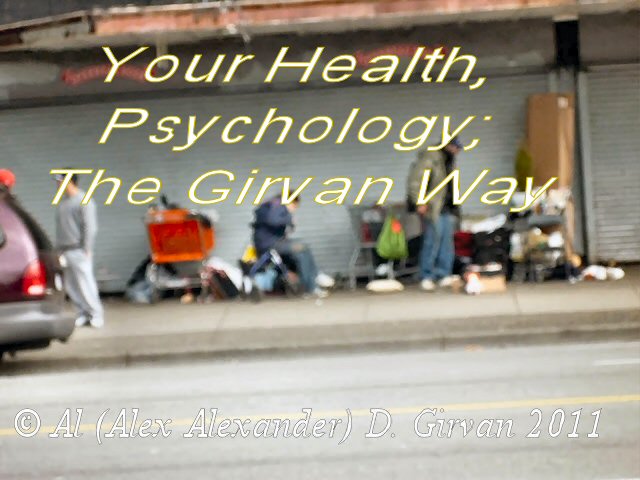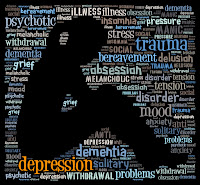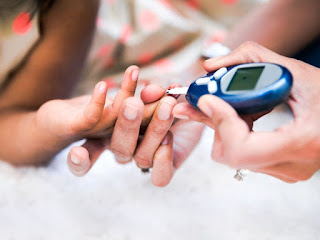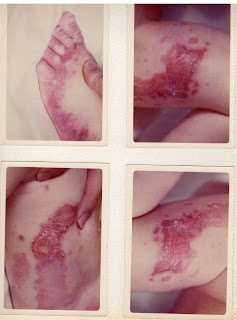Across all racial/ethnic groups, the rate of new diagnosed
cases of type 1 diabetes increased more annually from 2003-2012 in males (2.2
percent) than in females (1.4 percent) ages 0-19.
Among youth ages 0-19, the rate of new diagnosed cases of
type 1 diabetes increased most sharply in Hispanic youth, a 4.2 percent annual
increase. In non-Hispanic blacks, the rate of new diagnosed cases of type 1
diabetes increased by 2.2 percent and in non-Hispanic whites by 1.2 percent per
year.
 Among youth ages 10-19, the rate of new diagnosed cases of
type 2 diabetes rose most sharply in Native Americans (8.9 percent), Asian
Americans/Pacific Islanders (8.5 percent) and non-Hispanic blacks (6.3
percent). Note: The rates for Native
Americans cannot be generalized to all Native American youth nationwide.
Among youth ages 10-19, the rate of new diagnosed cases of
type 2 diabetes rose most sharply in Native Americans (8.9 percent), Asian
Americans/Pacific Islanders (8.5 percent) and non-Hispanic blacks (6.3
percent). Note: The rates for Native
Americans cannot be generalized to all Native American youth nationwide.
Among youth ages 10-19, the rate of new diagnosed cases of
type 2 diabetes increased 3.1 percent among Hispanics. The smallest increase
was seen in whites (0.6 percent). The rate of new diagnosed cases of type 2
diabetes rose much more sharply in females (6.2 percent) than in males (3.7
percent) ages 10-19.
Diabetes – Some Facts
Diabetes mellitus is a chronic disease characterized by hyperglycaemia
(high blood sugar), due to an absolute or relative insulin deficiency. Insulin,
a hormone secreted from beta cells in the pancreas, assists with the conversion
of glucose into energy. Without insulin, glucose cannot be sufficiently
absorbed from the bloodstream into the cells of the body. Diabetes is
classified as:
Type 1
Diabetes (previously called insulin-dependent diabetes mellitus
(IDDM) or juvenile-onset diabetes) may account for 5% to 10% of all diagnosed
cases of diabetes (1). Type 1 diabetes is diagnosed primarily in childhood or adolescence,
but may be diagnosed in adults. Multiple daily injections of insulin are
required for survival. The most common form of type 1 is caused by autoimmune destruction
of beta cells, resulting in an inability of the pancreas to produce insulin.
Risk factors are less well-defined for type 1 than for type 2 diabetes, but
autoimmune, genetic and environmental factors are involved in the development
of this type of diabetes.
Type 2
Diabetes was previously called non-insulin-dependent diabetes
mellitus
(NIDDM) or adult-onset diabetes. Most commonly, type 2
diabetes begins after
age 40. However, in many countries, a growing number of
children and
adolescents are being diagnosed with type 2 diabetes
(2,3,4).
The onset of type 2 diabetes is a two-stage process: first,
there is resistance to
insulin’s action often exacerbated by obesity; second, the
pancreas fails to
increase insulin production enough to compensate adequately
for the resistance.
Type 2 may account for about 90% to 95% of all diagnosed
cases.
**Risk Factors For
Type 2** include age, obesity,
family history of diabetes, prior history of gestational diabetes, impaired
glucose tolerance, physical inactivity and race/ethnicity.
Diabetes is a condition where your body is not able to regulate levels of
glucose (sugar) in your blood. This results in too much or too little sugar in
your blood. There are 2 types of diabetes: type 1 and type 2. Type 1 diabetes
occurs when your pancreas stops producing insulin. If you have type 1 diabetes,
you will need to use an insulin injector to make sure your body gets enough
insulin.
Type 2 diabetes occurs when your body does not respond
properly to the insulin it produces. Treatment includes medication and
lifestyle changes to your diet and exercise routine.
Topic
Overview
What is
type 2 diabetes?
Type 2 diabetes happens when your body can't use insulin the
right way. Over time, the pancreas can't make enough insulin.
Insulin is a hormone that helps the body's cells use sugar
(glucose) for energy. It also helps the body store extra sugar in muscle, fat,
and liver cells. Without insulin, this sugar can't get into your cells to do
its work. It stays in your blood instead. Your blood sugar level then gets too
high.
High blood sugar can harm many parts of the body, such as
the eyes, heart, blood vessels, nerves, and kidneys. It can also increase your
risk for other health problems (complications).
Type 2 diabetes is different from type 1 diabetes. In type 1
diabetes, the body's immune system destroys the cells that release insulin, so
that over time the body can't produce insulin at all. In type 2 diabetes, the
body still makes some insulin, but it can't use it the right way.
What
causes type 2 diabetes?
You can get type 2 diabetes if: Your body doesn't respond as
it should to insulin. This makes it hard for your cells to get sugar from the
blood for energy. This is called insulin resistance.
Your pancreas doesn't make enough insulin.
If you are overweight, get little or no exercise, or have
type 2 diabetes in your family, you are more likely to have problems with the
way insulin works in your body. Type 2 diabetes can be prevented or delayed
with a healthy lifestyle, including staying at a healthy weight, making healthy
food choices, and getting regular exercise.
What
are the symptoms?
Some people don't have symptoms, especially when diabetes is
diagnosed early. This is because the blood sugar level may rise so slowly that
a person may not know that anything is wrong.
The Most
Common Symptoms Of High Blood Sugar Include:
Feeling very thirsty.
Urinating more often than usual.
Feeling very hungry.
Having blurred vision.
You can get high blood sugar for many reasons, including not
taking your diabetes medicines, eating more than usual (especially sweets), not
exercising, or being sick or under a lot of stress.
If You're
Taking Diabetes Medicine, You Can Also Have Problems With Low Blood Sugar. These
Symptoms Include:
Sweating.
Feeling weak.
Feeling shaky.
Feeling very hungry.
How is type 2 diabetes diagnosed?
If your doctor thinks that you have type 2 diabetes, he or
she will ask you questions about your medical history, do a physical
examination, and order a blood test that measures the amount of sugar in your
blood.
How is it treated?
The key to treating type 2 diabetes is to keep blood sugar
levels controlled and in your target range.
All of
the following help to lower blood sugar:
Making healthy food choices. Try to manage the amount of
carbohydrate you eat by spreading it out over the day.
Losing weight, if you are overweight
Getting regular exercise
Taking medicines, if you need them
It's also important to:
See your doctor. Regular check-ups are important to monitor
your health.
Test your blood sugar levels. You have a better chance of
keeping your blood sugar in your target range if you know what your levels are
from day to day.
Keep high blood pressure and high cholesterol under control.
This can help you lower your risk of heart and large blood vessel disease.
Quit smoking. This can help you reduce your risk of heart
disease and stroke.
It seems like a lot to do—especially at first. You might
start with one or two changes. Focus on checking your blood sugar regularly and
being active more often. Work on other tasks as you can.
It can be hard to accept that you have diabetes. It's normal
to feel sad or angry. You may even feel grief. Talking about your feelings can
help. Your doctor or other health professionals can help you cope.
Health Tools
Adaptation Date: 6/16/2017
For further information on the prevention, management, and
diagnosis of diabetes, speak to your health care provider. You may also call
8-1-1 to speak to a registered dietician, registered nurse, or pharmacist. Our dieticians
are available Monday to Friday 9:00 a.m. to 5:00 p.m.; our nurses are available
anytime, every day of the year; and our pharmacists are available every night
from 5:00 p.m. to 9:00 a.m. You can also Email a HealthLinkBC Dietician.

































